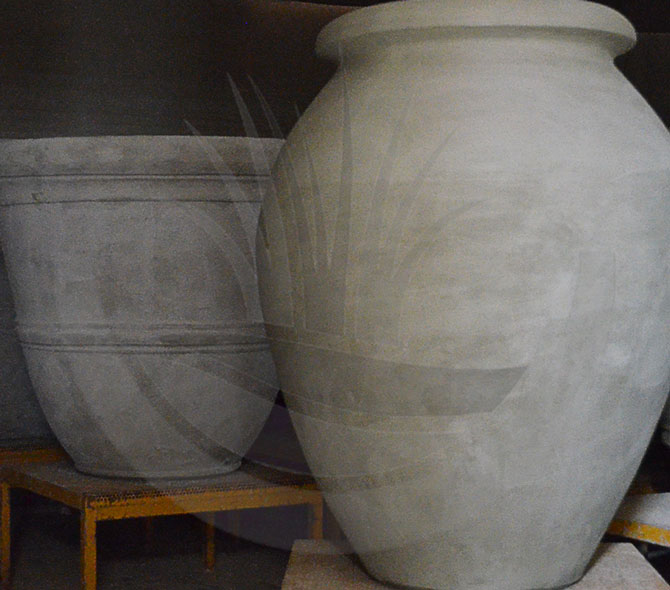
In the essential language of terracotta artisans, there are simple words that have a precise and important meaning only for this type of work. The pottery artisan, or more commonly cocciaio (speak something as cocheio), was not generally a scholar or cultured in the past, having devoted, often since a very young age, a lot of time to work. His communication, which comes from the legacy of the past, is simple and essential. In this section, examples of words specific to the terracotta production world and the meaning attributed to them are collected.
The word of this post is white or whitewashed, an adjective that refers to the clay pots in general.
During the long production phase of garden terracotta, which requires from 25 to 40-45 days depending on the production season and the size of the object produced,
after the production, the gradual drying of the vase begins, until the real drying takes place in the drying room or dryer.
The clay, which, when workable, takes on a pasty and damp consistency, is initially gray, green or dark brown in color, as it is damp for working. After our vase
has been made, as it loses its moisture, it begins to dry and lighten in color. At the moment of maximum drying, as it comes out of the dryer and is ready to be fired,
the vase is a light gray color, very light, similar to white. Hence, a white pot means that it is ready to be loaded and fired into the kiln.
Terracotta artisans, like many others in any manual labor industry, don't like to give long speeches or be exhaustive in explanations (their time is occupied by manual work),
so they used simple words or codes to identify situations or needs. Therefore, saying that vase is white could indicate that it is ready to be fired or to
proceed with rapid finishing because otherwise it will dry too much.
The terracotta artisans are simple men who, in the past, were not highly educated and learned the craft through generations. They use an essential vocabulary, a code that sometimes seems incomprehensible. What does it mean, for example, when a pot is described as white?
White is the opposite of Green. A green pot is still moist, and is not yet suitable to be fired. The adjective green is rarely used to indicate that a piece needs to be finished. There is a gradation of adjectives that follow the production process:
- Tenero: The english translation sounds like soft or malleable. The artifact has been recently produced, and is not yet ready to be removed from the mold. If a tender vase is removed from the mold, there is a risk that it will slump down to the ground.
- Sodo:The english translation sounds like hard or solid. The piece has gradually lost water, and has dried enough to ensure a "safe" removal from the mold. It is now ready to be finished and cleaned from wrinkles and marks left by the mold. It is also said that a vase is "sodo" when it can be safely placed in the dryer without the risk of cracking. If you wait too long, the piece will turn white and the finishing phase cannot be properly carried out.
- Green: it is still too wet, not completely dry, and cannot be fired. If a green vase is fired, especially if it is of great thickness, it is very likely that it will burst during firing. At 100 degrees Celsius, water evaporates, and if there is too much water inside the piece, the evaporation can be too high to be able to escape from the small pores of the clay. The internal pressure makes the vase burst as it still has poor mechanical resistance.
- White: it is perfect for firing, and it is too late to be finished.

